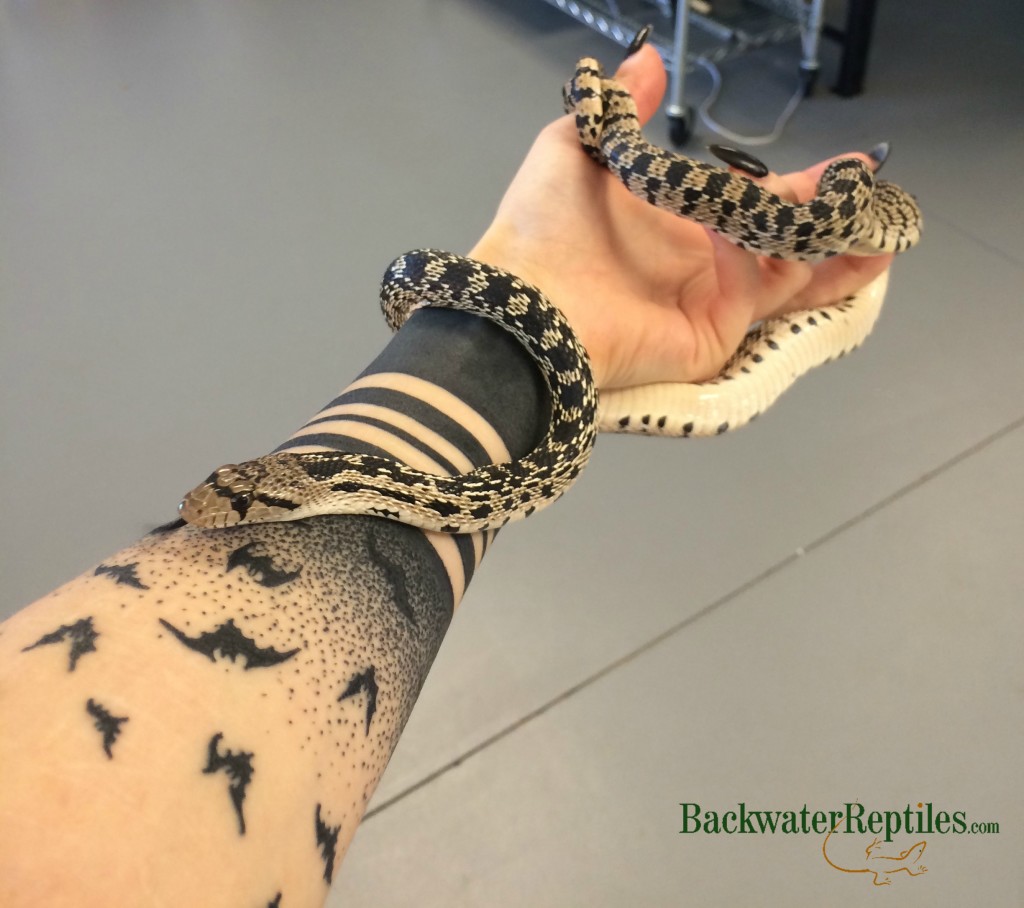If you’d like to learn how to pick up your pet snake, you’ve come to the right place. In truth, many pet reptiles and amphibians are better off as observational pets–in other words, it’s better for the animal’s health if you keep the human interaction to a minimum.
Luckily, this is not true for most species of snakes that are commonly kept as pets. In this article, we’ll answer some commonly asked questions about how to handle your pet snake.
How to pick up your pet snake
How should I pick up my snake?
We’d like to start off by stating that even docile snakes can be slightly skittish or nervous when you are in the process of removing them from their enclosure. Sometimes this is due to the temperament of the species, sometimes it is because you are waking up a sleepy snake, and other times, you might unintentionally frighten your snake.
The bottom line is that even the best pet snakes do strike out from time to time, and it is usually when they are in the process of being taken out of the cage to be held.

We also recommend transferring your snake to a separate container for meals. If you feed your snake in its normal enclosure, it could begin to associate the cage opening and therefore seeing you with food. This will lead to unintentional striking and biting at you as the snake will think that every time the cage opens, it’s dinner time.
Getting your pet snake out of its cage is not as simple as grabbing it and lifting it out. There are certain things you should do and things you should also avoid.
Here are some DO’s for picking up your pet snake:
-Do grab the snake around the middle section of its body.
-Do support as much of the snake’s body as much as you can. Try letting it wrap around your fingers, arm, and wrist so that it feels secure.
-Do be confident and consistent in your mannerisms when you pick up your snake. Try not to be timid, shy, or nervous as this will translate in your body language. Consistency will teach the snake that no harm will come to it when you pick it up and it will get used to interacting with you.

And on the other side of things, here are some definite things you want to avoid when picking up your pet snake:
-Don’t grab the snake by the tail. Many snakes will spin or thrash around if you grab their tail, and this behavior can cause the snake bodily harm.
-Don’t pick up your snake by its head. Many snakes are “head-shy,” which means that anything suddenly touching the animal’s head will scare it and could result in biting.
-Don’t let your snake flail around in your grip. You want the animal to be relaxed and calm, which will happen if you support its body and allow it to feel safe.
What snakes react best to being handled?
Corn snakes, king snakes, boas, pythons, and milk snakes are all good snakes for people that enjoy holding and connecting with their pet through physical contact.
All of these species adapt very well to captivity and many are even captive bred so they have no parasites and are in overall peak health.
Another good thing about many of these species is that they have relatively calm temperaments and with the exception of a few species of constrictors, they also don’t usually grow overly large. Smaller snake = smaller and less harmful bite if the snake does happen to strike at you for some reason.

I own a venomous pet snake. How should I pick it up?
We highly recommend that you keep the handling and interaction with venomous snake species to an absolute minimum.
Unless you are an expert, playing with, holding, and otherwise having contact with a venomous snake can spell disaster.
However, if you feel ready to own a venomous pet snake and you want to remove it from its enclosure, we highly recommend using a snake hook, which we will talk about more below.
Should I use a snake hook to pick up my snake?
If you are unfamiliar with what a snake hook is, it’s exactly what it sounds like. It’s a metal tool with a handle on one end and a hook on the other end. They are used to handle venomous, aggressive, or nervous snakes.

Generally, once you get to know your pet snake and its own individual disposition, you’ll be able to read its body language. If your snake is in a defensive posture and you need to pick it up, we recommend using a snake hood to avoid being bitten.
Once you have removed the snake from the enclosure using the hook, it is usually safe to transfer it to your hands. Again, as we’ve previously mentioned, snakes tend to be at their most nervous at the initial time you are taking them out of the cage.
Conclusion – How to pick up my pet snake
Many species of snakes do well when interacting with people. Most are content to sit in the palm of your hand, but others develop habits of wrapping around your arm, shoulder, or neck.
No matter where your snake likes to sit, if you follow our tips and tricks, you’ll have a calmer, more pleasant experience each time you hold your snake.
